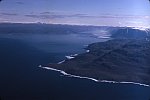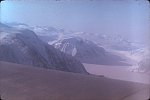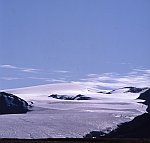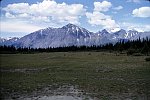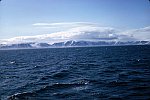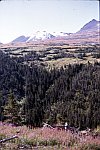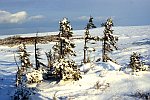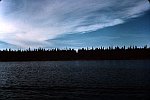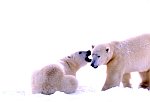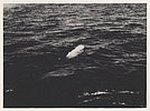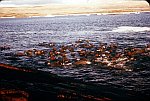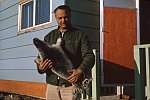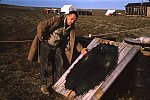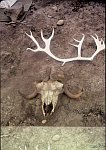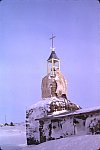The Northern Eco-System
Author: Curt McManus Page 1 | Page 2 | Page 3
The first thing that should be noted about the Canadian North is that it is not a flat tree-less expanse of nothingness, void of all life and covered in snow and ice 12 months of the year. This misconception is a sometimes common one, even in Canada. Yes, the weather tends toward the chilly side with winter temperatures in some regions reaching minus 60 degrees Celsius (-76F), and yes, snow and ice are both prominent features of life in the North. In the words of naturalist Wayne Lynch, ice “provides a challenge to every living thing to adapt, to change, to improvise and to survive.” Lynch goes on to say that “nothing escapes the ice.” But, Lynch hits on an important point concerning the eco-system in the Canadian North. The ice and snow force all living things to adapt to the environment. Humans, animals, plants; all have been compelled to adapt to the environmental conditions peculiar to the north, and the existence of such a surprising variety of life in a region which seems to preclude life is a testament to the ability of plants and animals to adapt. In thus adapting, our expectations and conceptions about the North are challenged. “A moose,” writes Lynch, “appears content munching willow twigs at 60 degrees below zero.” The North is cold and sometimes covered in snow and ice; but there is more to it than that.
For a region perceived as uniformly cold and ice laden, the Canadian North also has surprising variety of different geographical and geological borders and boundaries each of which marks off a distinct area within a region. In the same was that the Inuit, famously, have dozens of words for different types of snow, and geologists have many terms for different forms of ice, there are also many geographical designations used to describe the Canadian North. There is, for example, High Arctic, Low Arctic, Sub Arctic, and just plain Arctic. Ellesmere Island, located near Greenland, is an example of High Arctic; Labrador is Low-Arctic and the Mackenzie River Basin is sub-Arctic.
Each of these regions, in turn, has unique climate designations like ‘ice-cap climate’, ‘tundra climate’, ‘taiga climate’ and these climate regions also have different types. For example, the tundra climate breaks down into ‘tussock tundra’, ‘wet tundra’, ‘mesic tundra’, and ‘shrub tundra’. The Polar Desert is fairly self-explanatory and features little more than rock, gravel and the occasional Lichen.
For clarities sake and for the purposes of discussion here, the North will be divided into two general areas: High Arctic and Sub Arctic. The dividing line between High and Sub Arctic is fairly straightforward. In general terms, the border between the two regions is the tree-line which follows a fairly straight course running north and west from the eastern edge of Great Slave Lake to the narrowest point of the Bering Strait. North and East of that line is the High Arctic, which includes the famed “Barren Lands”, Ellesmere Island, Baffin Island, Devon Island and Banks Island, among others. This is where explorers in the 19th century often got lost or were marooned amongst the ice.
South and West of the line is the Sub-Arctic which includes the Mackenzie and Yukon River Basins, and which is characterized by lush tree growth, mountains, valleys and endless streams and rivers. It is this latter region which constitutes the largest part of the Canadian North, but it is the former region which has etched itself into the collective mind of Canadians and what we often imagine when we think of the North.
Political boundaries too, generally reflect Arctic geographical divisions. The recently created territory of Nunavut encompasses all of the High arctic lands; its boundaries begin just past the eastern edge of Great Slave lake and its northern and western boundaries very nearly follow the tree-line. Meanwhile, the northern borders of the western provinces of Saskatchewan, Alberta and Manitoba cut neatly right through the middle of the tree-line.
These then, are the general geographical and political divisions of the Canadian North. But who exactly calls this area home? And what, exactly, can live, grow and survive in the North?
Likely the animal which first springs to mind when the North is mentioned is the Polar Bear. Indeed, the Polar Bear is as much a national symbol as is the beaver or the loon, though considering that this animal is largely confined to the remoter regions of Canada, and few Canadians have actually seen a Polar Bear, its ubiquity in the national consciousness is somewhat perplexing.
At any rate, the Polar Bear is one of the strongest and toughest of the arctic dwelling mammals. In contrast to the curiously “vegetarian” Grizzly Bear (also an northern dweller) the Polar Bear is a carnivore. The Polar Bear weighs over one thousand pounds and stands as high as four and a half feet at the shoulders.
Being near the top of the food chain, most Polar Bears, it seems, would die of old age, rather than any other cause. The bears generally feed on seals, but if seals are unavailable, then walrus or beluga whales will suffice.
Polar Bears, however, often meet the same fate as their prey because, while being close to the top of the food chain, they are not quite at the top.
